
Speciality material and gas containment company Luxfer (NYSE: LXFR) beat Wall Street’s revenue expectations in Q2 CY2025, with sales up 4.3% year on year to $104 million. Its GAAP profit of $0.10 per share was 50% below analysts’ consensus estimates.
Is now the time to buy Luxfer? Find out by accessing our full research report, it’s free.
Luxfer (LXFR) Q2 CY2025 Highlights:
- Revenue: $104 million vs analyst estimates of $98.2 million (4.3% year-on-year growth, 5.9% beat)
- EPS (GAAP): $0.10 vs analyst expectations of $0.20 (50% miss)
- Adjusted EBITDA: $14 million vs analyst estimates of $11.3 million (13.5% margin, 23.9% beat)
- Operating Margin: 7.4%, down from 14.3% in the same quarter last year
- Free Cash Flow was -$740,000, down from $6.2 million in the same quarter last year
- Market Capitalization: $327.1 million
Company Overview
With its magnesium alloys used in the construction of the famous Spirit of St. Louis aircraft, Luxfer (NYSE: LXFR) offers specialized materials, components, and gas containment devices to various industries.
Revenue Growth
A company’s long-term sales performance can indicate its overall quality. Any business can put up a good quarter or two, but the best consistently grow over the long haul. Over the last five years, Luxfer grew its sales at a sluggish 2% compounded annual growth rate. This fell short of our benchmarks and is a rough starting point for our analysis.
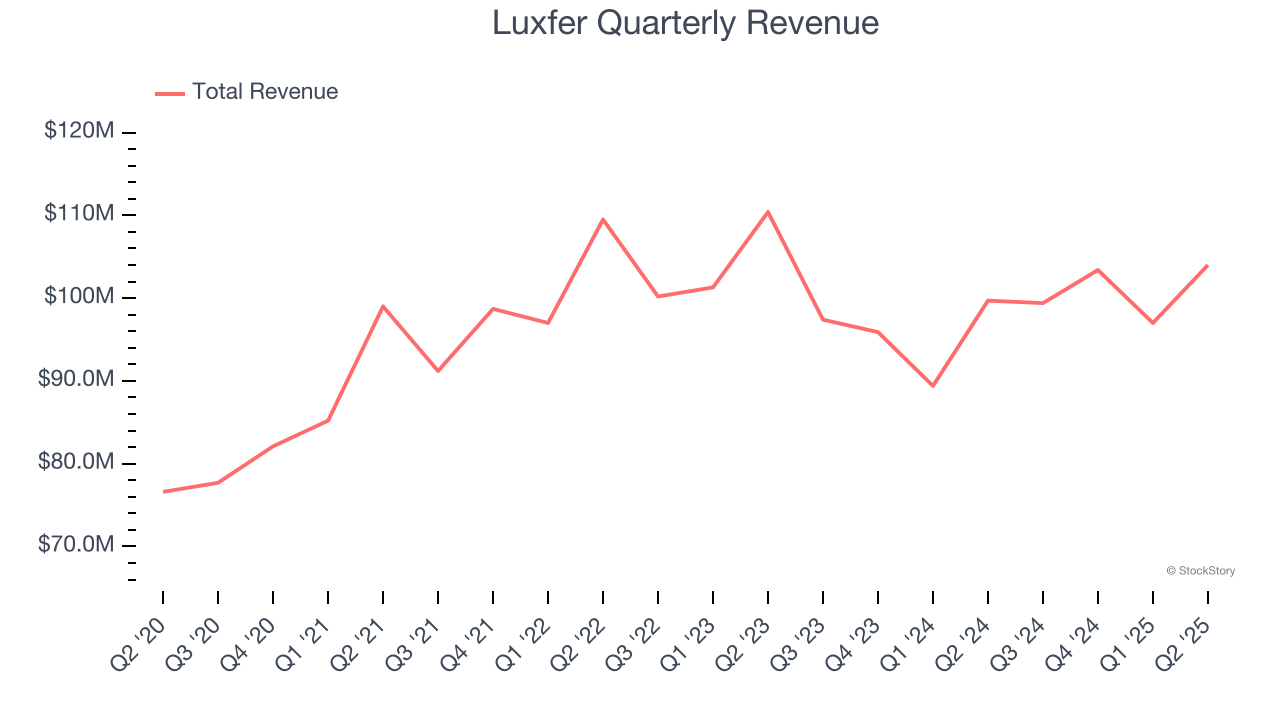
We at StockStory place the most emphasis on long-term growth, but within industrials, a half-decade historical view may miss cycles, industry trends, or a company capitalizing on catalysts such as a new contract win or a successful product line. Luxfer’s performance shows it grew in the past but relinquished its gains over the last two years, as its revenue fell by 1.9% annually. 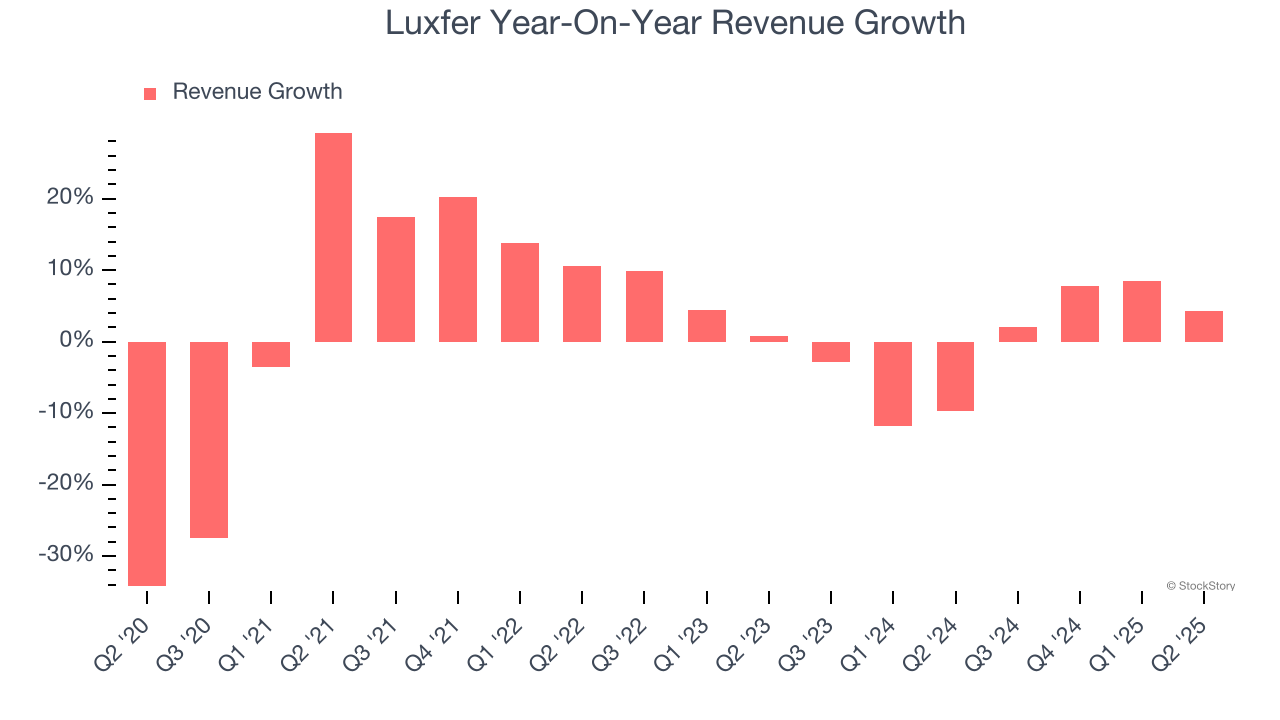
This quarter, Luxfer reported modest year-on-year revenue growth of 4.3% but beat Wall Street’s estimates by 5.9%.
Looking ahead, sell-side analysts expect revenue to decline by 1.8% over the next 12 months, similar to its two-year rate. This projection is underwhelming and indicates its newer products and services will not catalyze better top-line performance yet.
Unless you’ve been living under a rock, it should be obvious by now that generative AI is going to have a huge impact on how large corporations do business. While Nvidia and AMD are trading close to all-time highs, we prefer a lesser-known (but still profitable) stock benefiting from the rise of AI. Click here to access our free report one of our favorites growth stories.
Operating Margin
Luxfer has done a decent job managing its cost base over the last five years. The company has produced an average operating margin of 9.7%, higher than the broader industrials sector.
Looking at the trend in its profitability, Luxfer’s operating margin decreased by 5.2 percentage points over the last five years. This raises questions about the company’s expense base because its revenue growth should have given it leverage on its fixed costs, resulting in better economies of scale and profitability.
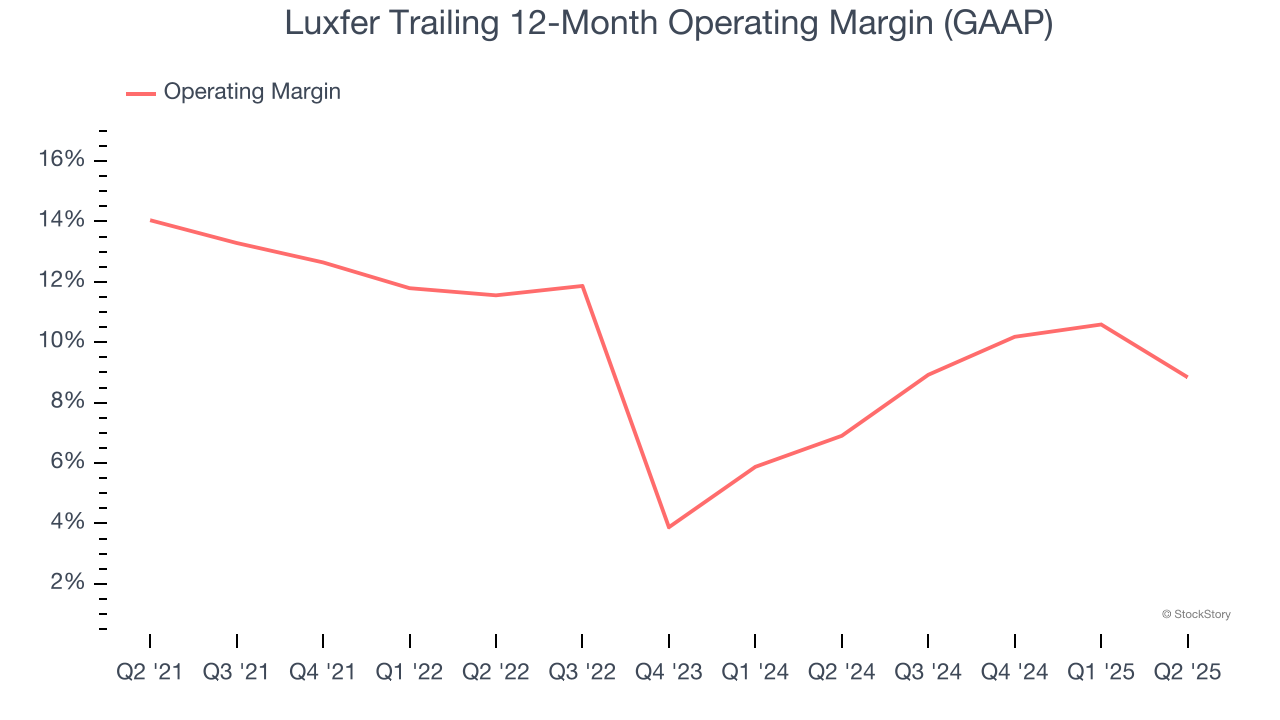
In Q2, Luxfer generated an operating margin profit margin of 7.4%, down 6.9 percentage points year on year. Conversely, its revenue and gross margin actually rose, so we can assume it was less efficient because its operating expenses like marketing, R&D, and administrative overhead grew faster than its revenue.
Earnings Per Share
We track the long-term change in earnings per share (EPS) for the same reason as long-term revenue growth. Compared to revenue, however, EPS highlights whether a company’s growth is profitable.
Luxfer’s EPS grew at a remarkable 12.9% compounded annual growth rate over the last five years, higher than its 2% annualized revenue growth. However, this alone doesn’t tell us much about its business quality because its operating margin didn’t improve.
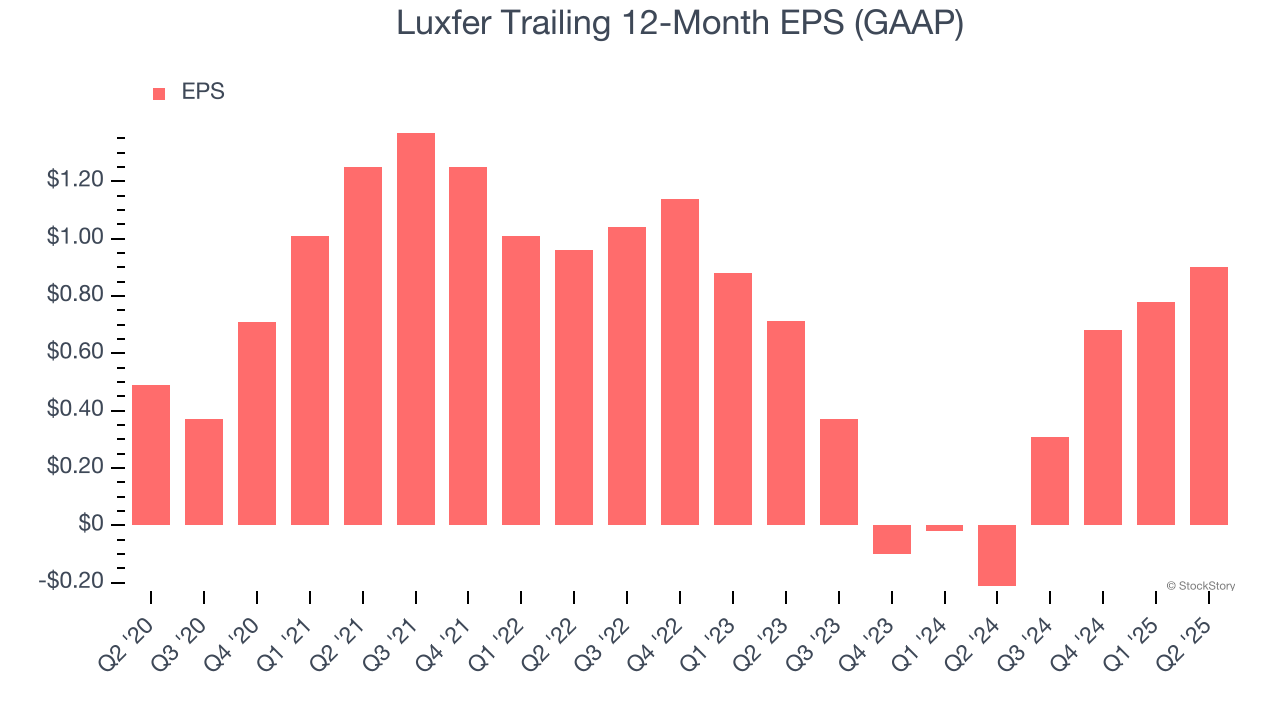
Diving into the nuances of Luxfer’s earnings can give us a better understanding of its performance. A five-year view shows that Luxfer has repurchased its stock, shrinking its share count by 3.1%. This tells us its EPS outperformed its revenue not because of increased operational efficiency but financial engineering, as buybacks boost per share earnings. 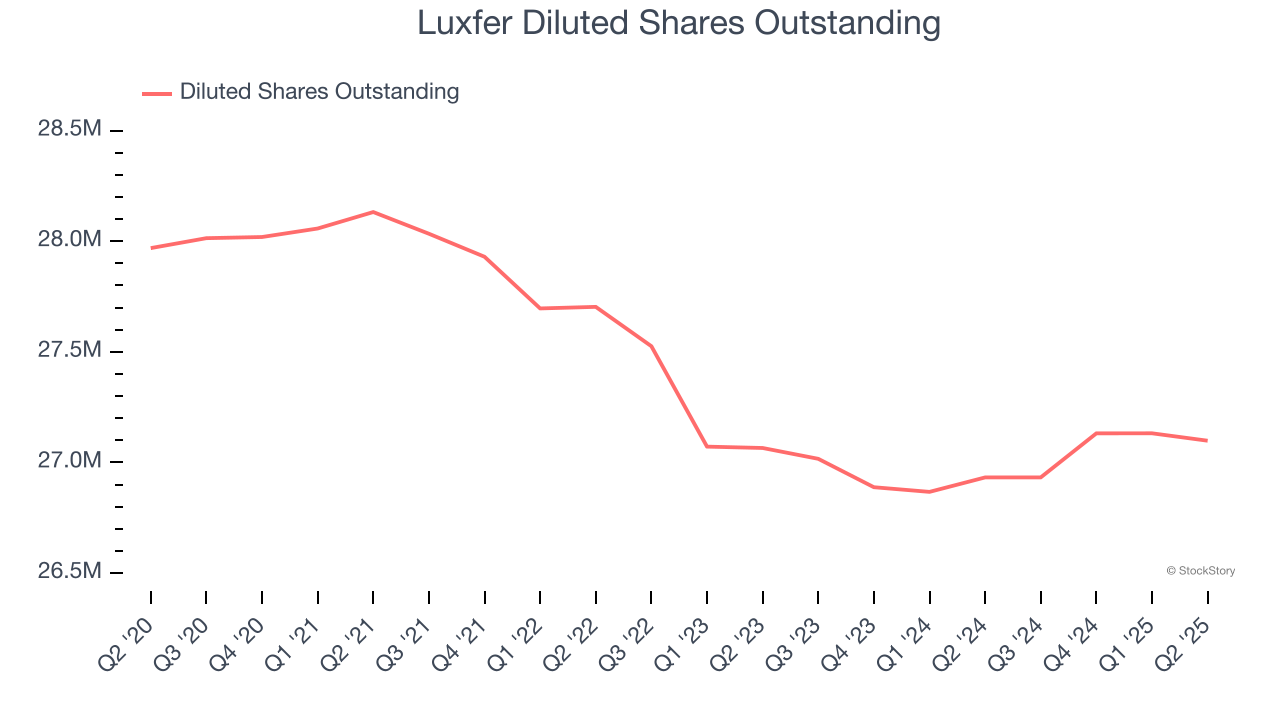
Like with revenue, we analyze EPS over a more recent period because it can provide insight into an emerging theme or development for the business.
For Luxfer, its two-year annual EPS growth of 12.4% is similar to its five-year trend, implying strong and stable earnings power.
In Q2, Luxfer reported EPS at $0.10, up from negative $0.02 in the same quarter last year. Despite growing year on year, this print missed analysts’ estimates, but we care more about long-term EPS growth than short-term movements. Over the next 12 months, Wall Street expects Luxfer’s full-year EPS of $0.90 to grow 6.7%.
Key Takeaways from Luxfer’s Q2 Results
We were impressed by how significantly Luxfer blew past analysts’ EBITDA expectations this quarter. We were also excited its revenue outperformed Wall Street’s estimates by a wide margin. On the other hand, its EPS missed. Overall, we think this was a decent quarter with some key metrics above expectations. The stock remained flat at $12.28 immediately after reporting.
Is Luxfer an attractive investment opportunity right now? If you’re making that decision, you should consider the bigger picture of valuation, business qualities, as well as the latest earnings. We cover that in our actionable full research report which you can read here, it’s free.





